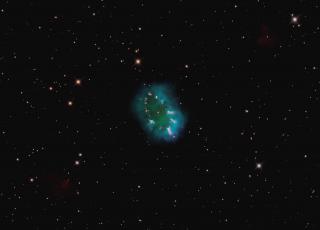Bibcode
Montez, R., Jr.; Kastner, J. H.; Balick, B.; Behar, E.; Blackman, E.; Bujarrabal, V.; Chu, Y.-H.; Corradi, R. L. M.; De Marco, O.; Frank, A.; Freeman, M.; Frew, D. J.; Guerrero, M. A.; Jones, D.; Lopez, J. A.; Miszalski, B.; Nordhaus, J.; Parker, Q. A.; Sahai, R.; Sandin, C.; Schonberner, D.; Soker, N.; Sokoloski, J. L.; Steffen, M.; Toalá, J. A.; Ueta, T.; Villaver, E.; Zijlstra, A.
Bibliographical reference
The Astrophysical Journal, Volume 800, Issue 1, article id. 8, 19 pp. (2015).
Advertised on:
2
2015
Journal
Citations
68
Refereed citations
51
Description
We present X-ray spectral analysis of 20 point-like X-ray sources
detected in Chandra Planetary Nebula Survey observations of 59 planetary
nebulae (PNe) in the solar neighborhood. Most of these 20 detections are
associated with luminous central stars within relatively young, compact
nebulae. The vast majority of these point-like X-ray-emitting sources at
PN cores display relatively "hard" (>=0.5 keV) X-ray emission
components that are unlikely to be due to photospheric emission from the
hot central stars (CSPN). Instead, we demonstrate that these sources are
well modeled by optically thin thermal plasmas. From the plasma
properties, we identify two classes of CSPN X-ray emission: (1)
high-temperature plasmas with X-ray luminosities, L X, that
appear uncorrelated with the CSPN bolometric luminosity, L
bol and (2) lower-temperature plasmas with L X/L
bol ~ 10–7. We suggest these two classes
correspond to the physical processes of magnetically active binary
companions and self-shocking stellar winds, respectively. In many cases
this conclusion is supported by corroborative multiwavelength evidence
for the wind and binary properties of the PN central stars. By thus
honing in on the origins of X-ray emission from PN central stars, we
enhance the ability of CSPN X-ray sources to constrain models of PN
shaping that invoke wind interactions and binarity.
Related projects

Bipolar Nebulae
This project has three major objectives: 1) To determine the physico-chemical characteristics of bipolar planetary nebulae and symbiotic nebulae, to help understanding the origin of bipolarity and to test theoretical models, mainly models with binary central stars, aimed at explaining the observed morphology and kinematics. 2) To study the low
Antonio
Mampaso Recio